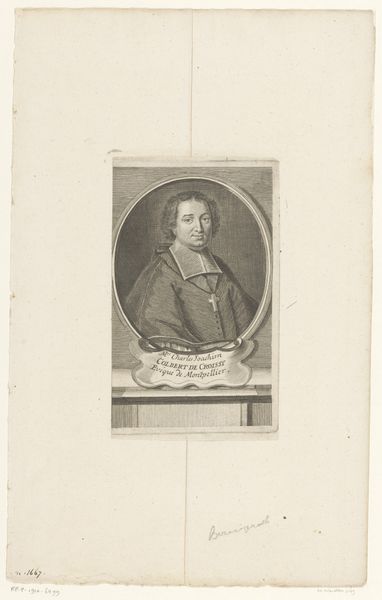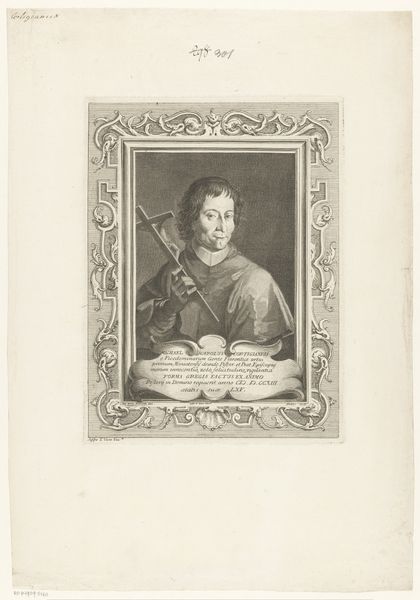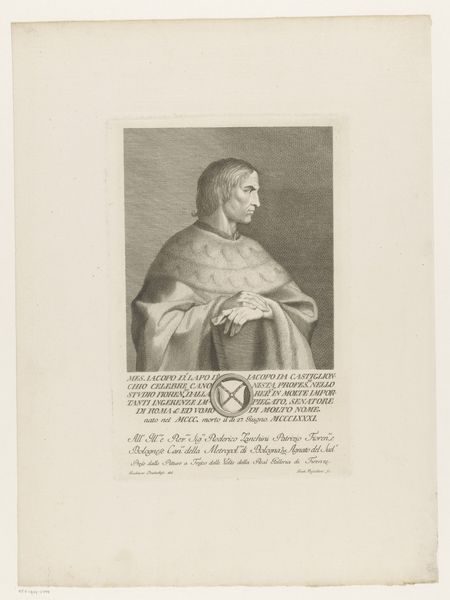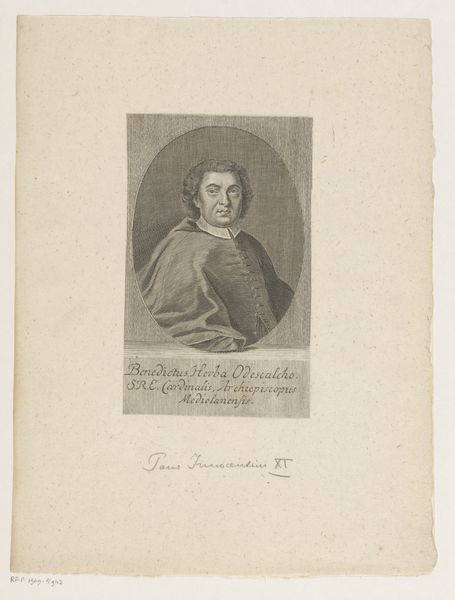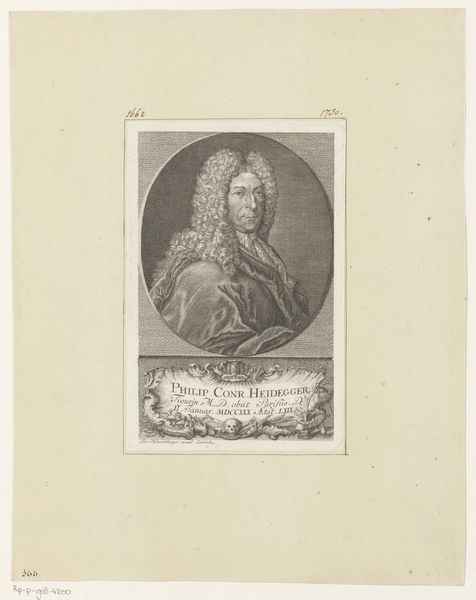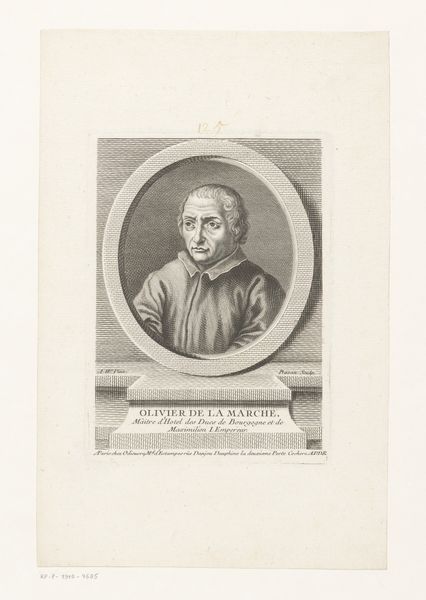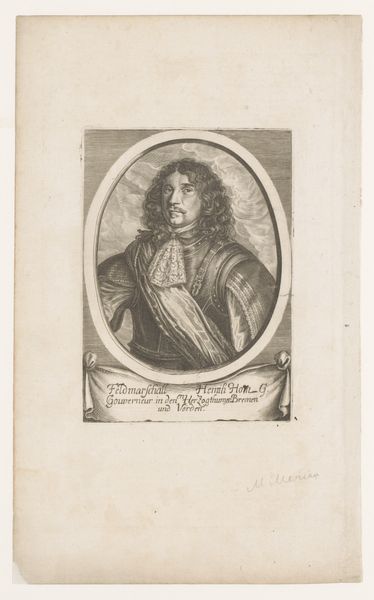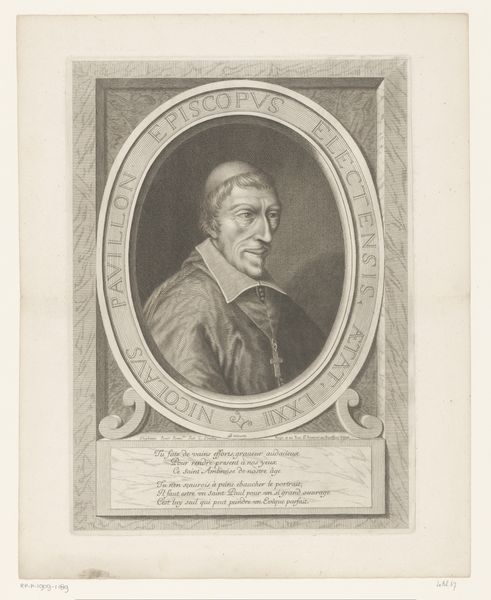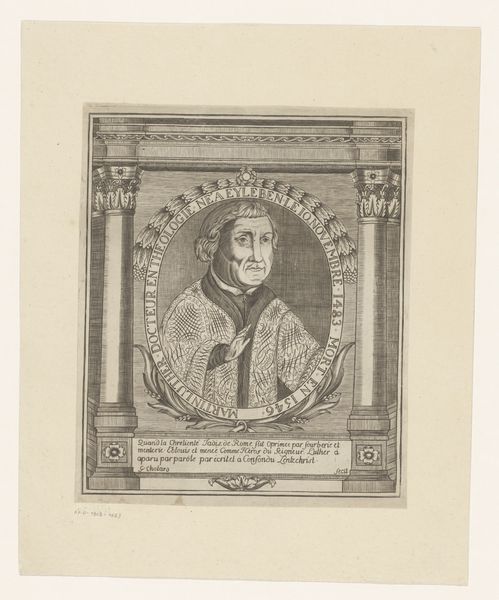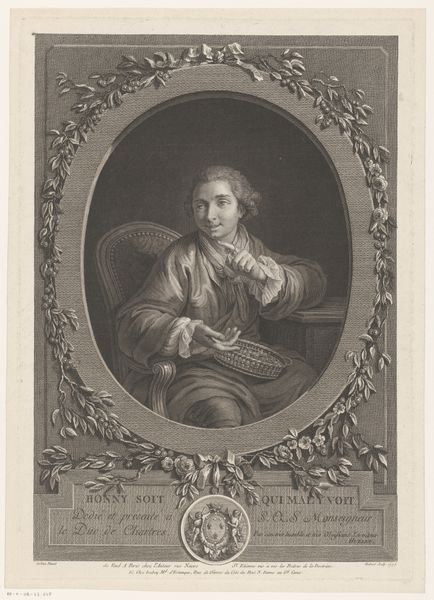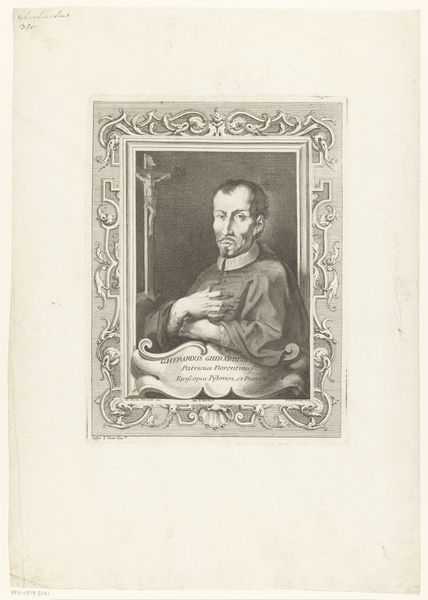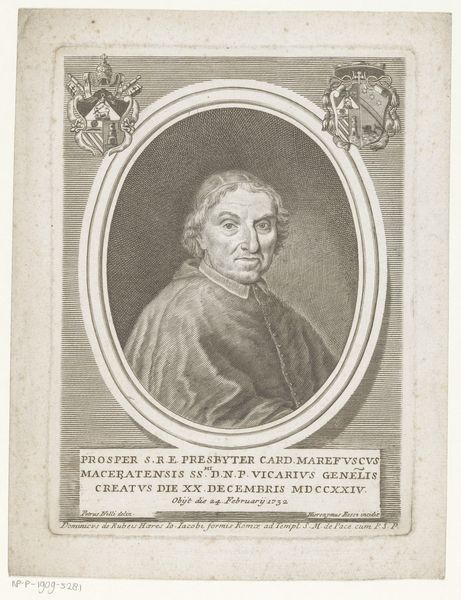
print, engraving
#
portrait
# print
#
old engraving style
#
history-painting
#
italian-renaissance
#
engraving
Dimensions: height 298 mm, width 197 mm
Copyright: Rijks Museum: Open Domain
Editor: Here we have an engraving entitled *Portret van schrijver en historicus Filippo Villani*, made sometime between 1755 and 1805 by Gaetano Vascellini. I’m immediately struck by its serious, almost austere mood. What's your take on it? Curator: Considering this engraving through a historical lens, it becomes a document not just of Filippo Villani, but of the 18th century's perception of the Italian Renaissance. Think about the role engravings played at the time—circulating knowledge, shaping cultural memory, particularly regarding the Renaissance. Editor: So, it's not just about Villani, but also about how he was remembered? Curator: Precisely! Who was commissioning and collecting these images? How did this portrayal of Villani function within the political and intellectual climate of the 18th century? Was this intended for a scholarly audience or a broader public, and how would that affect its message? Editor: I hadn’t thought about that – about how the print itself is part of a historical conversation, not just reflecting one. It definitely shifts my understanding. I was just looking at it as a portrait. Curator: The medium, engraving, is important. The lines themselves hold history. Who would've purchased or used this kind of portrait? The Italian Renaissance was experiencing renewed interest. Where were such prints displayed? What does it say about history being re-packaged for a later, consuming audience? Editor: I see… it's like each print contributes to a broader understanding of the Renaissance as it was *received* through time, not just how it *was*. It also makes you wonder what's ‘true’ when we view images. Curator: Exactly! It highlights the mediated nature of historical understanding itself. Editor: Thanks, I definitely have a better perspective and a few research ideas now. Curator: It’s about unpacking the layers of history embedded within an image, a print, an engraving. Always keep asking: whose story is being told, and for whom?
Comments
No comments
Be the first to comment and join the conversation on the ultimate creative platform.
